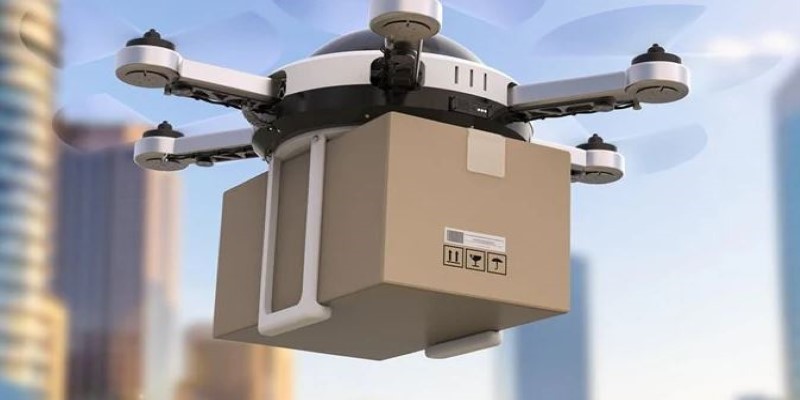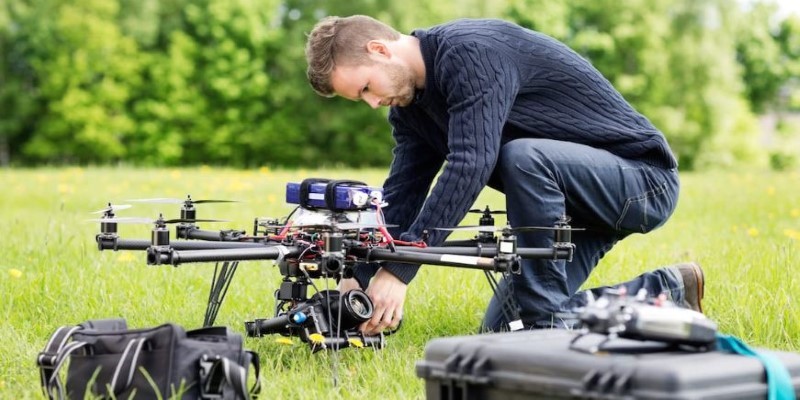The world of drones has evolved significantly in recent years, growing from niche hobbyist tools to indispensable assets for industries like agriculture, construction, media, and logistics. The need for drone insurance has sharply risen as drones become more integrated into business operations and everyday life. The market for drone insurance is expanding rapidly, driven by an increasing number of drone operators, more complex regulations, and heightened awareness of the risks associated with uncrewed aerial vehicles (UAVs). In this article, we'll break down the key drivers behind the growth of drone insurance, the types of coverage available, and the factors influencing its future development.
The Rise Of Drone Usage Across Industries
Drones have found their place in various sectors, ranging from agriculture, where they assist in crop monitoring and precision farming, to real estate, where they are used for aerial photography. Construction companies use drones for surveying and site inspections, while logistics companies are exploring their potential for package delivery. As more businesses adopt drones for commercial purposes, the need for insurance to protect both the equipment and any potential liabilities increases.

In the early days of drone usage, the focus was primarily on recreational flying. However, with technological advancements, drones have become more powerful and accessible to various industries. According to recent market research, the commercial drone market alone is expected to reach nearly $58 billion by 2025. With this growth comes a significant increase in the number of drones in the sky, which, in turn, raises concerns about safety, liability, and privacy issues. This is where drone insurance comes into play.
The Role Of Regulations In Shaping The Market
The evolving regulatory landscape is a critical factor contributing to the demand for drone insurance. In many countries, government agencies have introduced regulations to govern drone operations. For example, the Federal Aviation Administration (FAA) has established strict rules regarding drone flight paths, altitude restrictions, and operational areas. These regulations are designed to ensure safe drone use, but they also impose responsibilities on drone operators, which creates an increased need for insurance.

The European Union Aviation Safety Agency (EASA) has also introduced drone regulations in Europe. These regulations include requirements for drone operators to register their drones, ensure adequate training, and follow specific operating guidelines. Many countries are also considering introducing mandatory drone operator insurance, further driving the market.
The growing number of regulations and the expanding commercial use of drones means that operators are more exposed to legal and financial risks than ever before. Insurance has become essential for drone businesses to comply with regulations and safeguard against potential liabilities arising from accidents, property damage, or injuries caused by drones.
Types Of Drone Insurance Coverage
As the market for drone insurance grows, so does the variety of insurance products available to cover different types of risks. Businesses and individuals need to consider several key areas of drone insurance.
Liability Insurance
Liability insurance is one of the most common types of drone coverage. It protects drone operators from legal claims arising from accidents caused by their drones. If a drone crashes into another aircraft, causes property damage or injures someone, liability insurance covers the associated legal and medical costs. This is especially important for commercial drone operators, who face higher risks and potential financial losses from accidents.
Hull Insurance

Hull insurance covers the physical damage to the drone itself. If the drone crashes, falls or sustains any other damage during operation, hull insurance helps to repair or replace the drone. This type of coverage is vital for businesses that rely on drones as key operational tools. The cost of high-quality drones can range from a few thousand dollars to tens of thousands, making hull insurance a significant investment.
Payload Insurance
Many drones carry expensive equipment, such as cameras, sensors, or surveying tools. Payload insurance covers damage or loss to these attachments. For businesses using drones for aerial photography or surveying, payload insurance can help protect against significant financial losses if specialized equipment is damaged or destroyed.
Personal Injury Insurance
Drones can be dangerous if not operated correctly, and drone accidents can cause injuries. Personal injury insurance provides coverage if a drone operator or a third party is hurt due to drone operations. This type of coverage is significant for operators working in high-risk environments or where drones are flown over populated areas.
Cyber Insurance
With the increasing use of drones in business, the potential for cyber-related risks has also grown. Drones often rely on wireless communication for flight control, and if hacked, they can be used for malicious purposes or cause accidents. Cyber insurance helps protect drone operators from the consequences of cyberattacks or data breaches involving their drones.
Factors Driving The Growth Of Drone Insurance
Several factors are contributing to the rapid expansion of the drone insurance market.
Increasing Drone Adoption
As more industries adopt drone technology, the demand for insurance rises. Drones are being used for everything from monitoring environmental changes to providing security surveillance, and as the number of operators increases, so do the risks. Businesses must ensure adequate coverage to protect their equipment, personnel, and property investments.
Safety Concerns
Although drones are generally safe when operated correctly, accidents do happen. The possibility of mechanical failure, human error, or even unforeseen obstacles like birds or other aircraft can result in crashes. For businesses, the consequences of an accident can range from financial losses to legal liabilities. Insurance provides peace of mind by mitigating these risks.
Regulatory Pressure
As mentioned earlier, government regulations are pushing the demand for insurance. Businesses must have specific insurance coverage in many regions to comply with local laws. This trend is expected to continue as governments worldwide introduce more comprehensive rules for drone operations.
The Rise Of Commercial Drone Pilots
The increasing number of commercial drone pilots is another key factor driving the insurance market's growth. Many countries, including the U.S. and the U.K., now require drone operators to hold licenses to fly commercially. To obtain these licenses, operators must often demonstrate adequate insurance coverage.
Technological Advances In Drones
Their value has increased as drones become more advanced and capable of performing complex tasks. High-end drones with thermal imaging cameras, advanced sensors, and other specialized tools are becoming more commonplace. These drones are expensive and carry additional risks due to their complexity. The rise in drone technology has increased the demand for insurance that covers these more sophisticated UAVs.
The Future Of Drone Insurance
The drone insurance market is still in its early stages but is evolving rapidly. As the use of drones continues to grow, the insurance industry will need to adapt and offer tailored solutions to meet the specific needs of different sectors. The increasing integration of drones into everyday business operations and more stringent regulatory requirements will likely drive further growth in this sector.
In the future, we may see more standardized insurance policies that cater to different drone use cases, making it easier for operators to secure coverage. Additionally, the growth of drone fleets and the rise of new technologies, such as autonomous drones and drone delivery systems, will likely introduce new insurance challenges. Insurers must develop more sophisticated products to cover emerging risks of these new technologies.
At the same time, as the insurance market grows, the competition among providers will likely lead to more affordable premiums and better coverage options for drone operators. Insurers will also likely use advanced data analytics and AI to assess risks more accurately, allowing them to tailor policies and offer competitive pricing.
Conclusion
The drone insurance market is expanding quickly, driven by the increasing adoption of drones across industries, evolving regulations, and a growing awareness of the risks associated with drone operations. From liability and hull insurance to payload and cyber insurance, operators can access various products that help mitigate the financial and legal risks of flying drones. As the industry continues to grow and drone technology advances, the market for drone insurance will likely see even greater demand, pushing insurers to create more comprehensive and specialized coverage options. The future of drone insurance looks promising, with greater affordability, customization, and coverage expected to meet the needs of a rapidly evolving industry.


